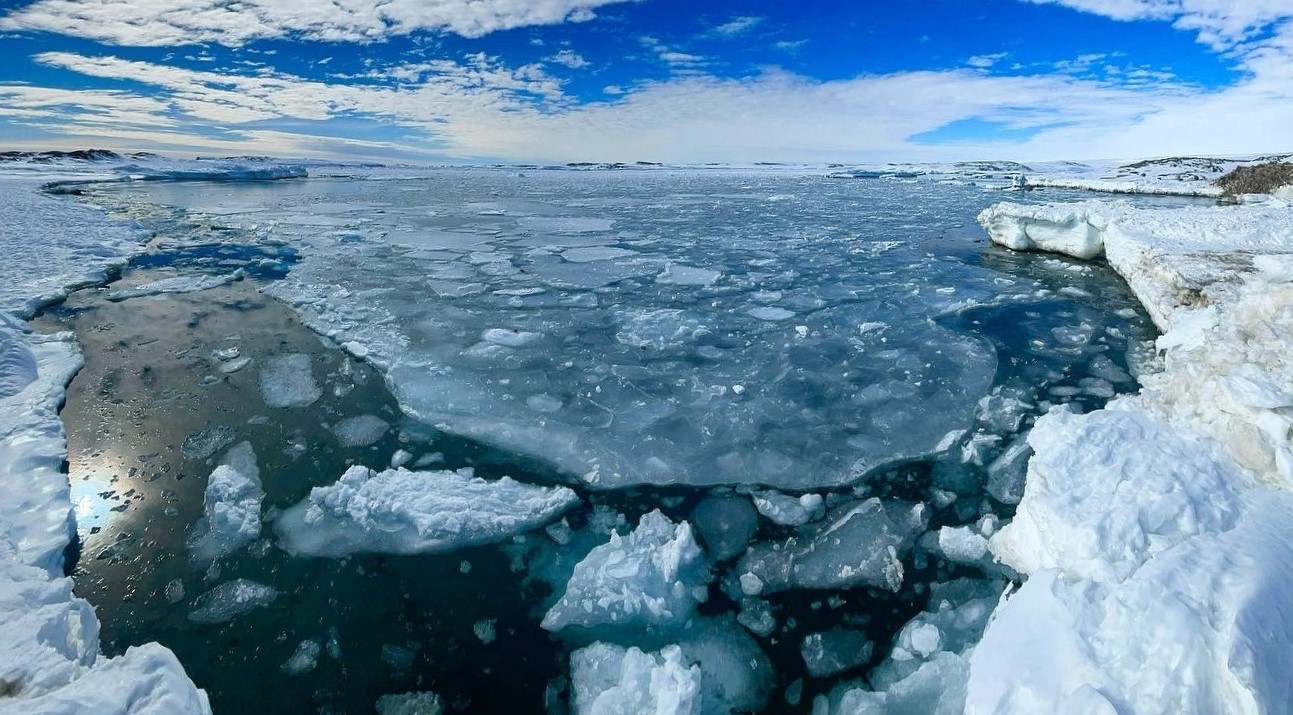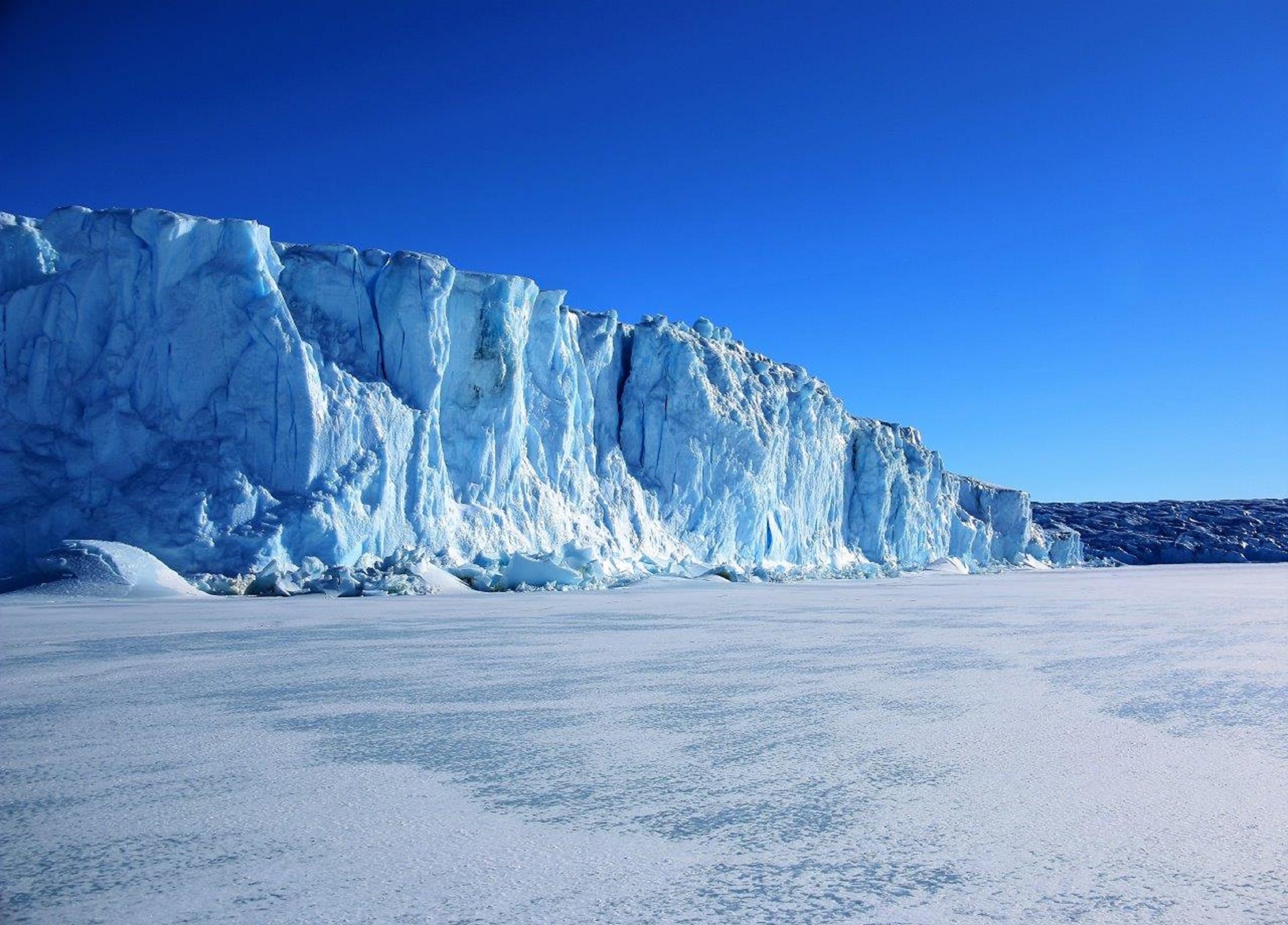As this month marks the third consecutive summer with extremely low sea-ice cover around Antarctica, new statistical research points to fundamental changes taking place in the polar Southern Ocean.
Antarctic sea ice reached its summer minimum area of 1.97 million km2 on 18 February, the third lowest on record behind 2023 (lowest) and 2022.
At the same time, a team of Hobart-based scientists published a study entitled Observational evidence for a regime shift in summer Antarctic sea ice in the Journal of Climate.
Lead author Dr Will Hobbs, of the Australian Antarctic Program Partnership (AAPP) at the University of Tasmania, said a 'regime shift' is an abrupt change in the behaviour of a system.
"The extreme lows in Antarctic sea ice have led researchers to suggest that a regime shift is under way in the Southern Ocean, and we found multiple lines of evidence that support such a shift to a new sea-ice state," Dr Hobbs said.

"We explored whether a significant change in sea-ice variability has led to more extreme sea-ice events over the last decade or so, and whether that's because of a changed response to the atmosphere or the ocean," Dr Hobbs said.
"We found that the variability of Antarctic sea ice, and how long the anomalies last, has increased significantly since 2006."
"Perhaps the most striking change for scientists is that while the atmosphere has always been the main driver of Antarctic sea-ice variability, the recent extreme fluctuations over the last decade can't be explained by the atmosphere alone," he said.
"AAPP research shows that the changes we're seeing – how much the sea ice can shift from its average state, and how long those shifts can stick around – are controlled by ocean processes. This is more evidence that ocean changes are probably the secret to what's happened in recent years."
A co-author of the study, Dr Phil Reid of the Bureau of Meteorology (an AAPP partner agency) said that scientists are now looking carefully at whether the new freeze season – which should start in March – will bring a repeat of last winter's alarming low sea-ice cover.
"To understand and be able to simulate the mechanisms responsible for these unprecedented extreme events, we need a coordinated and sustained observation network that includes real-time monitoring of the upper ocean, immediately under the sea ice."
"We also need to monitor where and when sea ice isn't present - particularly around the coastal margins. The presence of sea ice can act as a buffer between ocean swells and ice shelves. The removal of this buffer increases coastal exposure which can destabilise ice shelves, potentially increasing the flow of Antarctic glaciers and adding to sea level rise."

"This summer has set a new record for the length of Antarctic coastline exposed to damaging swells and surface ocean warming," Dr Reid said.
While this study doesn't consider the very extreme 2023 winter, it applied a branch of physics/mathematics called dynamical systems theory (proven in fields as broad as economics and ecology as well as in climate science) which shows there are three early warning indicators of an abrupt critical transition, or regime shift:
- more variability (this study found variability almost doubled for summer sea ice from 1979-2006 to 2007-2022);
- more persistence (this study found a much longer sea-ice 'memory' from season to season, meaning anomalies accumulate rather than dissipate over time); and
- greater spatial coherence (this study notes that low sea ice is seen in all sectors around Antarctica, not just a few locations as in the past).
"All these statistical changes are consistent with the theoretical indicators of a regime shift. Whether or not sea-ice changes have been forced by human-caused climate change has yet to be formally proven," said Dr Hobbs.
"But one thing is clear: the future of a frozen ocean in a warming world is increasingly uncertain."
"Continued low sea ice is bad news for unique polar ecosystems, global sea level and the planet's climate," he said.
The Australian Antarctic Program Partnership (AAPP) is a 10-year research program established in 2019, funded by the Australian Government, and led by the University of Tasmania (UTAS) with partner agencies the Institute for Marine and Antarctic Studies (IMAS), Australian Antarctic Division (AAD), CSIRO, Bureau of Meteorology (BoM), Integrated Marine Observing System (IMOS), Geoscience Australia and the Tasmanian Government.
Cover image by Dale Maschette AAD
shows sea ice beginning to form






